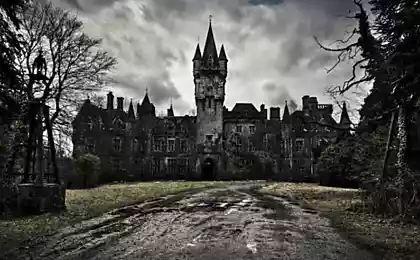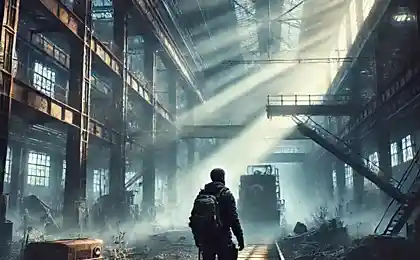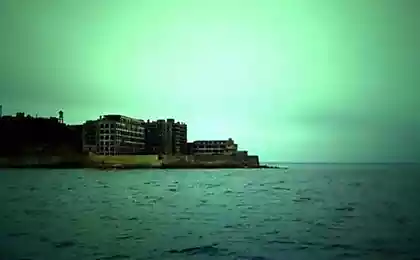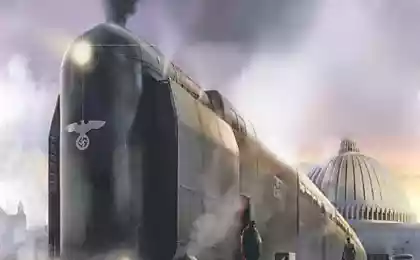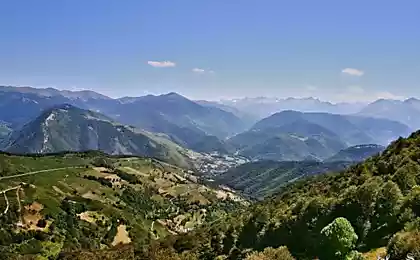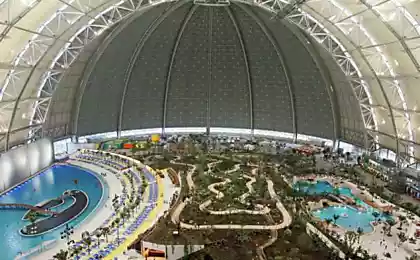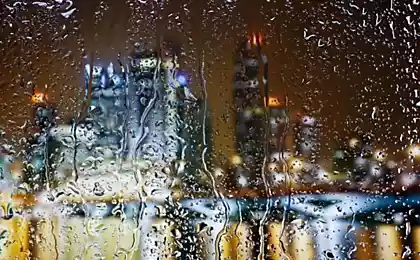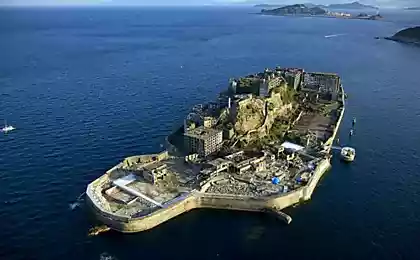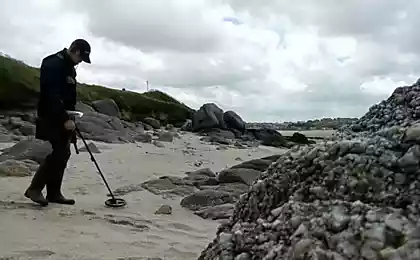1233
10 abandoned darkest places, where once life was in full swing
Is it possible to restore the past? There are countless reasons why the once-noisy place can be neglected: the war, climate change, famine, economic instability, even religion ... Whatever the reason, these places have become shadows of themselves, reminding us that all will inevitably come to an end. < br />
1. Ghost Town FenduEtot abandoned Chinese city, whose age is more than 2,000 years, is situated on the banks of the Yangtze River and is considered the locals house of the devil and the entrance to the underworld. Fengdu is believed to have been founded during the reign of the Han Dynasty two men, Yin and Wang, who became Taoist hermits.
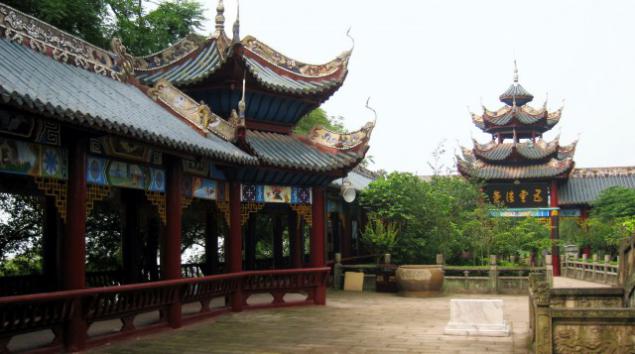
Later, during the Tang Dynasty (618-906. BC. E.), Fengdu gained a reputation for the place where the dead live, and became a famous Taoist cemetery.
After completion of the construction of the dam "Three Gorges" the lower part of the city submerged. However, hill and dozens of churches have remained on the surface of a large artificial lake, which was formed during the construction of the dam, which has greatly facilitated access to visitors. Upper temple complex, which has become a popular tourist attraction, filled with colorful statues depicting all kinds of devils and demons torturing souls in the afterlife.
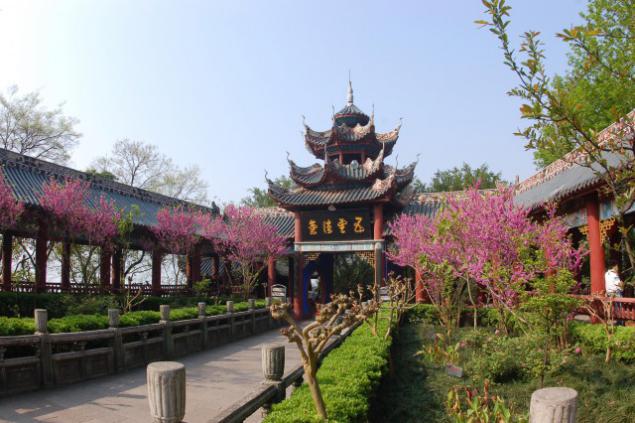
Among the many Taoist temples and shrines here is a stone statue of "The Phantom of the King", which was included in the Guinness Book of Records as the largest sculpture carved from a single stone.
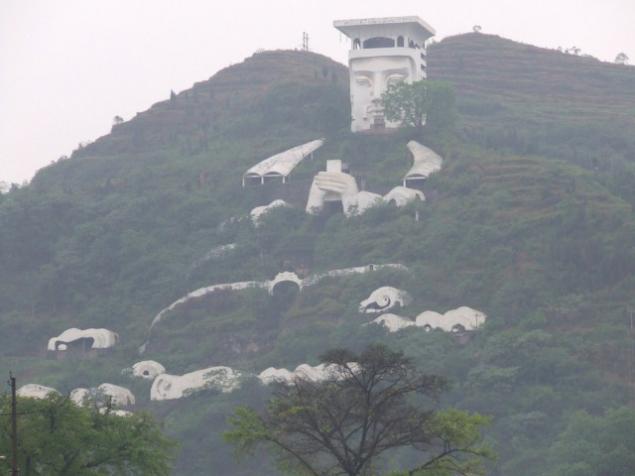
2. KayakёyDrevny ghost town Kayakoy, which is located near the Taurus Mountains in the south-west of Turkey, was once home to more than 20,000 Greeks. Today, because of political infighting that took place almost a century ago, it lies in ruins.
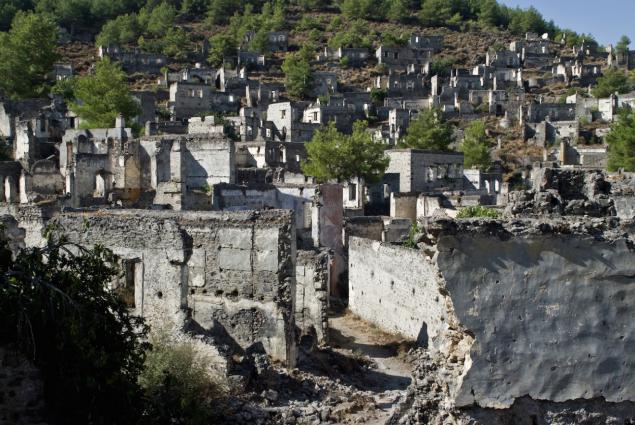
After the First World War and the collapse of the Ottoman Empire Greece and Turkey plunged into a war of their own land. The result was a common mandatory exchange of populations, and about 200,000 Greeks and more than 300,000 Turks were forcibly evicted from their homes.
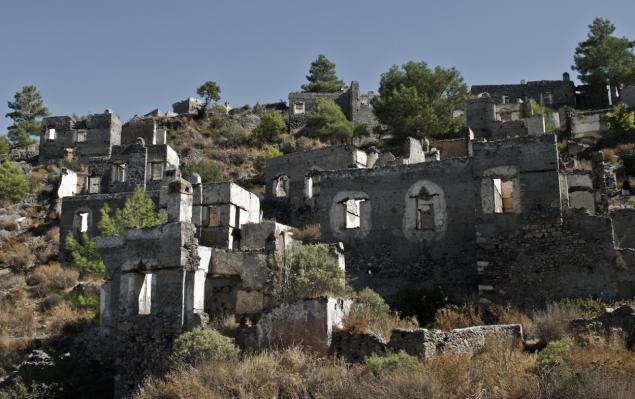
People who for years lived peacefully with the Muslim neighbors, were forced to go to war-torn Greece to start over and to avoid prosecution for something that had nothing to do.
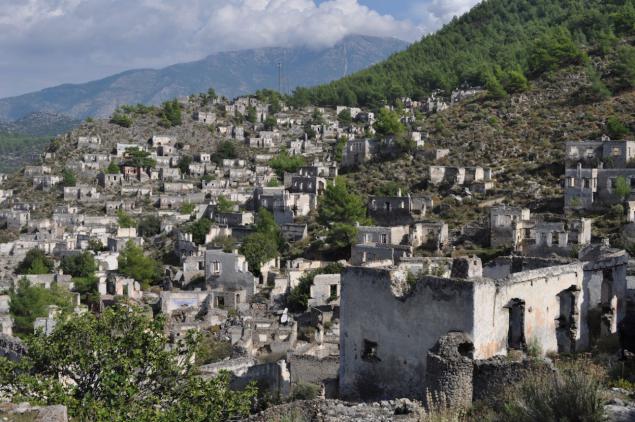
Surviving in the town of 350 houses and two Orthodox churches look almost like ancient. They serve as a reminder of how short can be a human lifetime in the face of nature. The museum, which tells the history of the city - is all that is left in Kayakoy.
3. Unique skyscraper SatornV the early 1990s, Thailand experienced the biggest economic boom in its history. At this time, plenty of Bangkok began to demonstrate its stability, building high-rise buildings.
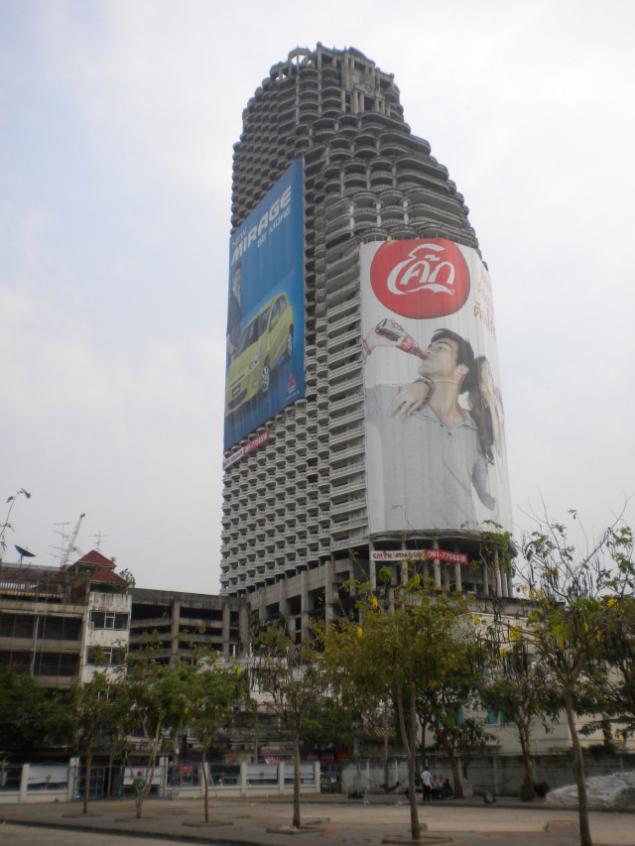
But during the Asian financial crisis of 1997, Thailand's economic success has stopped: the money depreciated literally overnight. Because of this almost finished the construction of the unique skyscraper Sathorn stopped just a few months before completion.

This 49-storey residential complex now stands alone, in spite of the great city of Bangkok and the Chao Phraya River. The entrance to it is forbidden and dangerous, many floors are collapsing from a simple touch.
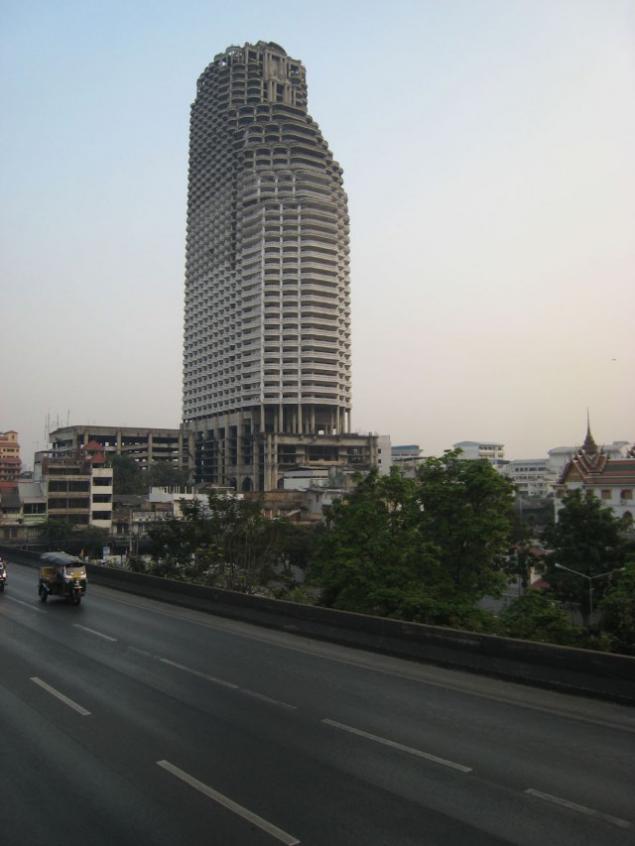
Today, Thailand has recovered and there were many other skyscrapers. But the fate of Sathorn is uncertain because its repair would cost more than a new building. In addition, he has a reputation for a long time there was a haunted house ...
4. The Inclined Plane KovasnyRaspolozhenny on the border of the former Austro-Hungarian Empire and the Romanian Principalities small town Covasna was an important industrial center in the forest and timber industry. In 1890 it was built a network of railways connecting Covasna with the rest of the country.
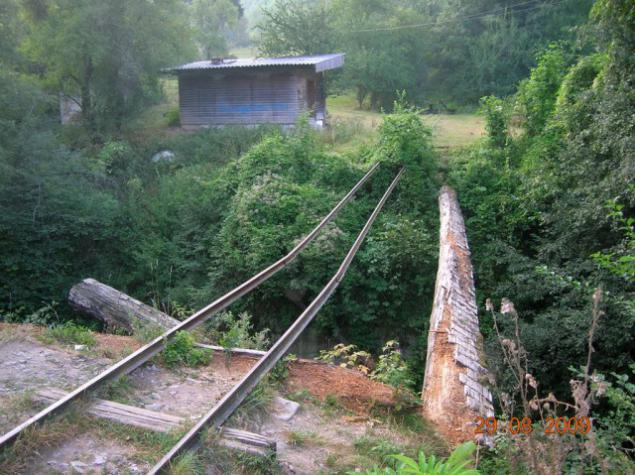
Within this network of railways it has developed a system that allowed only by means of gravity without motors descend composition, filled with logs at the same time raising the empty wagons up. This simple but brilliant invention of mankind at the time was unique, but today it can be found only in a few places around the world.
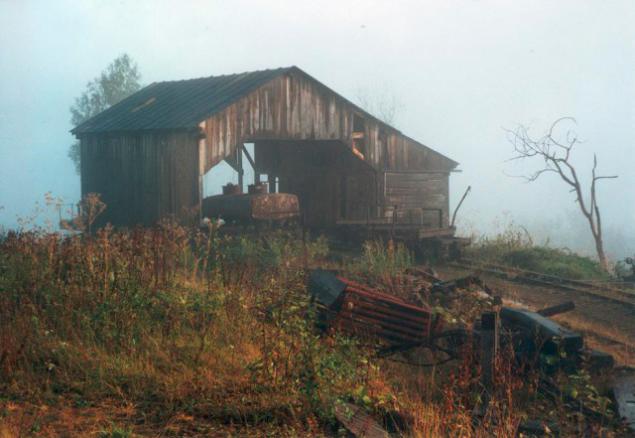
Unfortunately, in 1995 the region has fallen violent storm that destroyed much of the forest and timber industry. Local governments and wealthy investors discussed the regional plan for the restoration of the railway network and the system of the inclined plane as a tourist, but as long as it did not work out, largely due to the 2008 economic crisis.
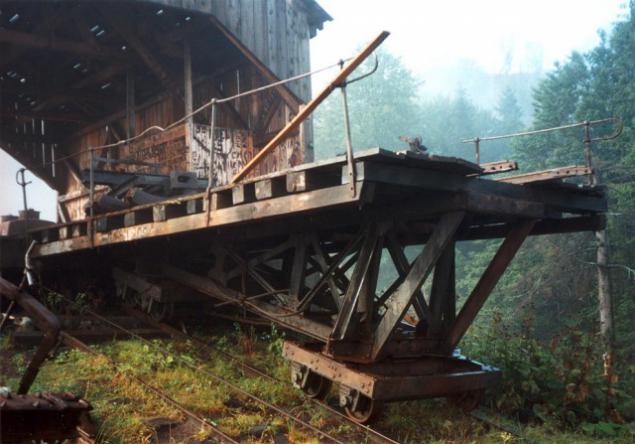
5. Island North BrazerOstrov, located just a few kilometers from the LaGuardia Airport, New Yorkers once passed it by, and now completely forgotten. Between 1880 and of the 1930's there was a hospital "Riverside", which was the last refuge for patients suffering from smallpox, typhoid fever, scarlet fever and leprosy. In 1938 there died notorious Typhoid Mary, kills drug dealers for their money. Before the final closure in 1963, the hospital was a rehabilitation center for drug-addicted teens.
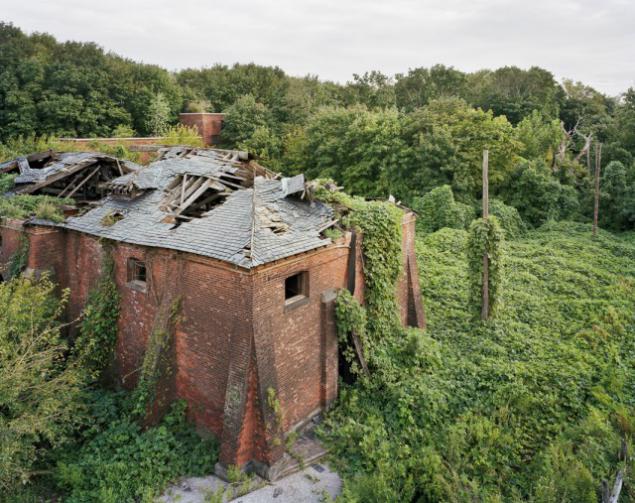
Today, North Brother Island is essentially a reserve. The hospital still standing, but inside there was nothing there. The windows are broken, the paint peeled off the walls and the roof crumble.
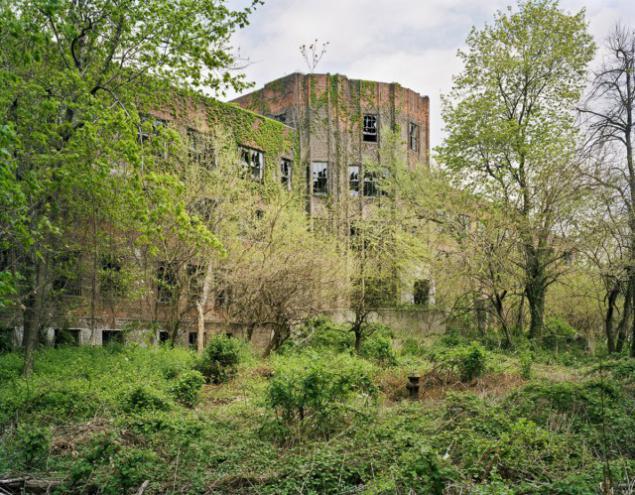
In 2008, the island once again attracted public attention when an architect and photographer Christopher Payne documented its current status.
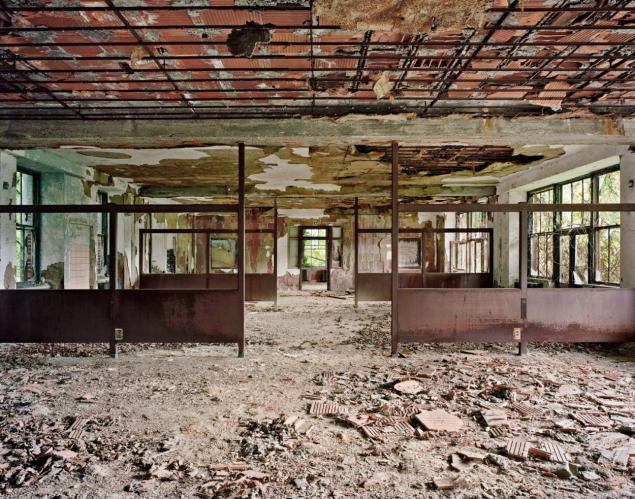
6. Teufelsberg (Devil's Mountain), this relic of the Cold War, quietly standing at the top of the highest hill of West Berlin. There was a radio station, radio intercepts all inputs and outputs on the Soviet side.
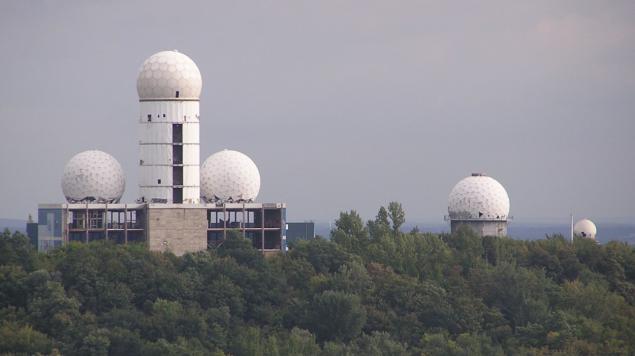
Sam Hill was built in 1963 from the rubble left after the Second World War. On this place used to be a Nazi military training school, which the Allies after an unsuccessful attempt to demolish decided to bury under the rubble of destroyed 120 meters of buildings that appeared as a result of heavy bombing Anglo-American aviation. Later this place became known as the Devil's Mountain.
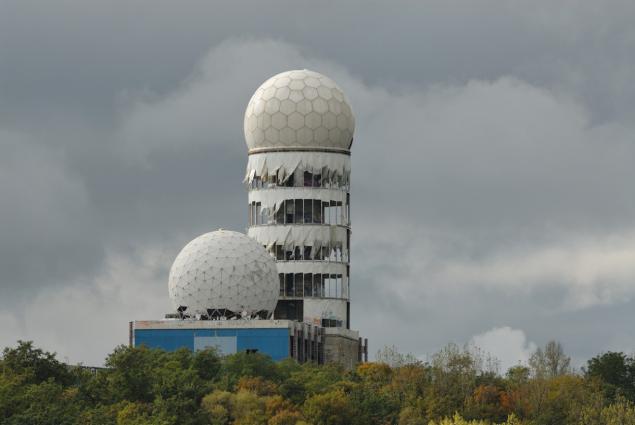
After the fall of the Berlin Wall is an abandoned building covered with graffiti changed a lot of owners. Among them was David Lynch, who was planning to build a University of meditation, but the municipality of Berlin, this plan is not approved.
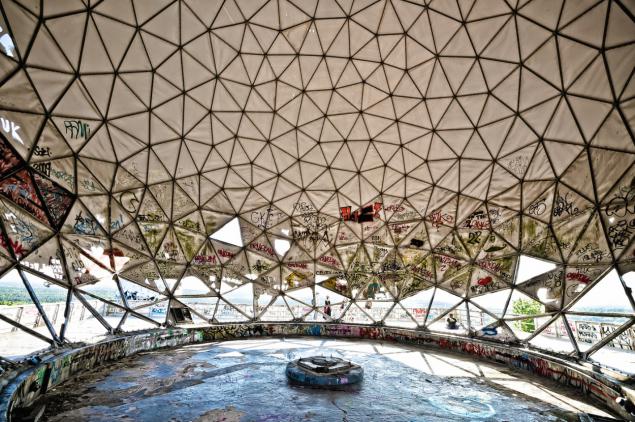
Others planned to build a luxury hotel, a restaurant and a museum of espionage, but it is likely that none of this in the near future will come. This is good news for Christopher Maklarrena, a former Teufelsberg, which organizes weekend tours are for those who like espionage.
7. PlimutObnaruzhenny Christopher Columbus back in 1493 the Caribbean island of Montserrat area of 100 square meters. km every day increases in size. On the one hand, given the area of the plot of land, this is good news. But on the other - this is the reason why the entire southern part of the island abandoned.
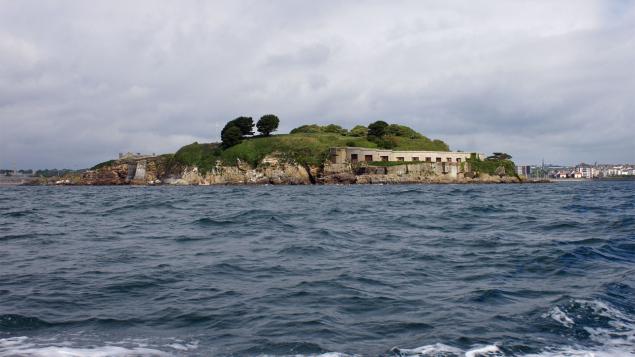
In 1995 and 1997, erupted once sleeping volcano Soufrière Hills. City of Plymouth and the surrounding area were covered with a layer of hot ash more than a meter thick. As in the ancient city of Pompeii, most of the buildings, streets and cars Plymouth turned forever locked in solid, concrete, pyroclastic flows.
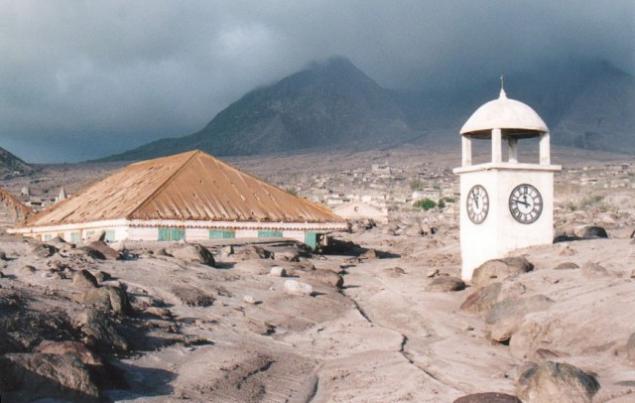
Fortunately, almost all residents were safely evacuated to the northern part of the island, and no one was hurt, but the tourist economy is literally turned to ashes, with no hope of revival in the near future.
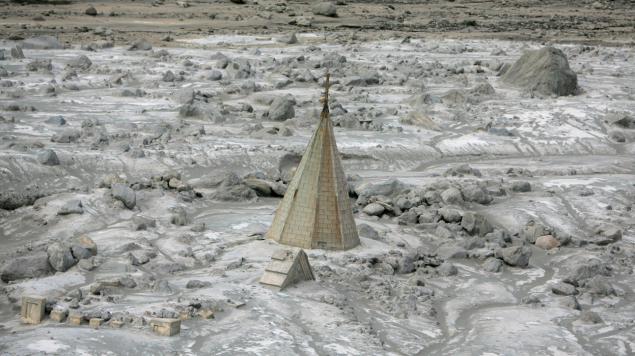
8. Chateau MirandaNekogda beautiful neo-Gothic castle built in the south of Belgium near the French border, now lies in ruins. During the French Revolution, a politically active family Liedekerke Beaufort was forced to leave the castle and move to a neighboring farm to lie low and wait for the results of the revolution.
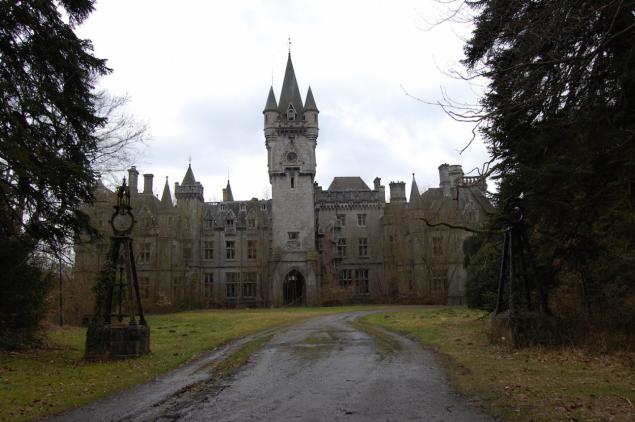
Once everything was complete, they were ready to start all over again, and in 1866 began construction of the Chateau Miranda.
After the Second World War and up to the 80s of the last century Belgian national railway company used the castle as a summer camp for orphans.
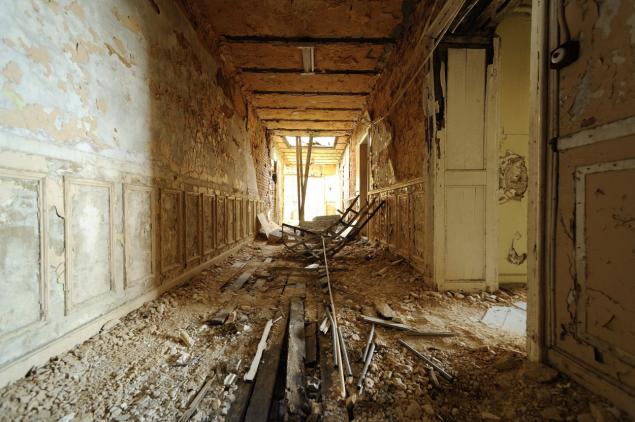
With the growth of maintenance costs in 1991, the castle was abandoned. Four years later, a fire destroyed part of the roof, and the owners moved out of him all the valuables, parquet floors and Italian marble in the other his castle in Italy.
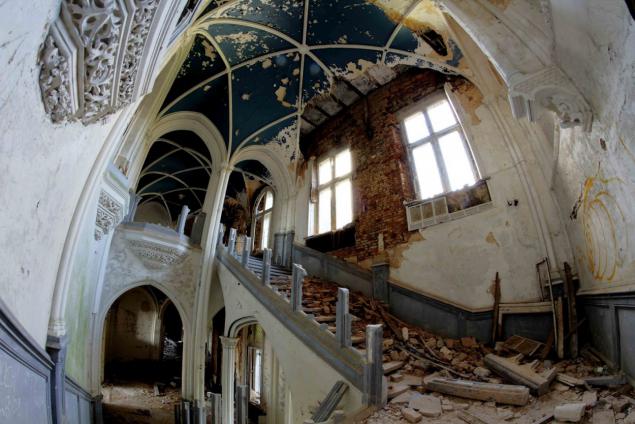
Today, even after several offers to purchase and conversion of the castle to the hotel, it remains empty. In addition, Liedekerke Beaufort put forward a formal requirement for its demolition. Regardless of the outcome, the Château Miranda now living out their last days.
9. "The Holy Land" SSHAV 1958 in Waterbury, Connecticut, a man named John Greco built a biblical theme park. The park was very popular in the 60-70s of the last century, every year it attracts more than 40,000 visitors.
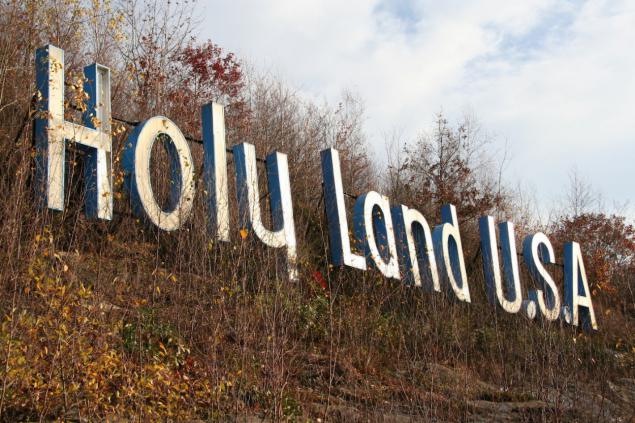
Among its main attractions are the miniature Bethlehem, nativity scene, Jerusalem, the crucifixion of Christ and the palace of Herod, a 15-meter stainless steel cross, noticeable from anywhere in the park, and many Bible verses written on the stones.
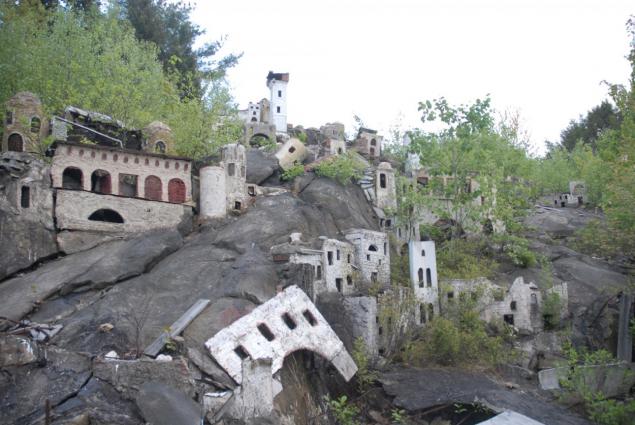
In 1984, the Greek decided to temporarily close the park for the reconstruction and expansion, but two years later he died, and more so the park was not already open.
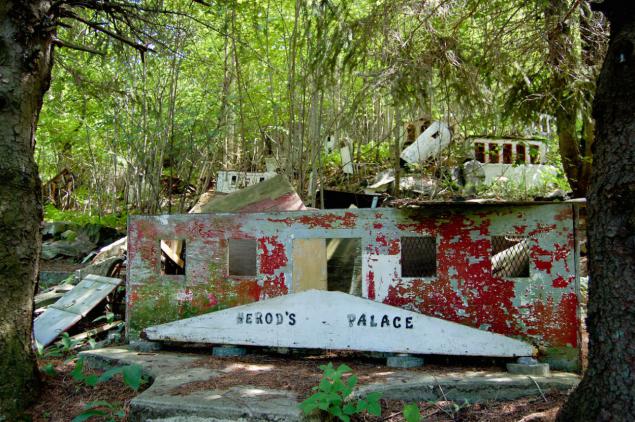
10. Abandoned railway station in AbhaziiAbhaziya, the region on the Black Sea, once a popular tourist destination for the Russian elite, including Stalin himself, abruptly losing popularity and is experiencing an economic crisis. Announcing the 1999 independence from Georgia, Abkhazia is still a disputed territory.
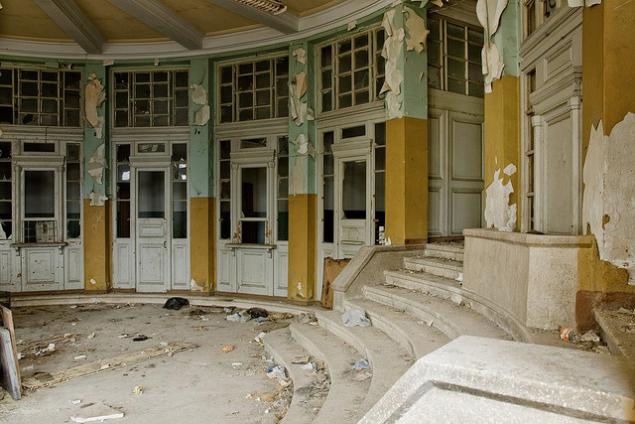
Her economic problems can be seen everywhere, including on ornate railway station in Sukhumi. Despite two decades of neglect, it still gives us an idea of how life looked like the top of Soviet society. Shelves made of mahogany, beautiful marble columns and elaborate stucco - all this can still be seen, though in a state of decline.
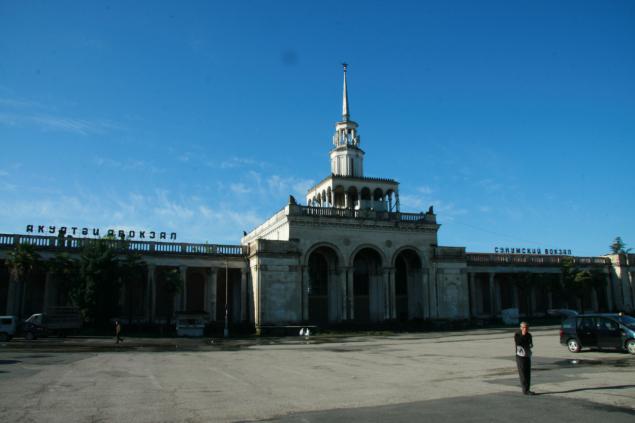
Sometimes Station visit passenger trains, but since it is very close to the ceasefire line with Georgia, now is the final station.
In recent years the region has experienced a major investment from Russia, which is trying to increase its influence in Abkhazia. Maybe someday this station will once again be bustling and busy station.
via www.toptenz.net/10-abandoned-destinations-we-wish-were-still-populated.php
1. Ghost Town FenduEtot abandoned Chinese city, whose age is more than 2,000 years, is situated on the banks of the Yangtze River and is considered the locals house of the devil and the entrance to the underworld. Fengdu is believed to have been founded during the reign of the Han Dynasty two men, Yin and Wang, who became Taoist hermits.

Later, during the Tang Dynasty (618-906. BC. E.), Fengdu gained a reputation for the place where the dead live, and became a famous Taoist cemetery.
After completion of the construction of the dam "Three Gorges" the lower part of the city submerged. However, hill and dozens of churches have remained on the surface of a large artificial lake, which was formed during the construction of the dam, which has greatly facilitated access to visitors. Upper temple complex, which has become a popular tourist attraction, filled with colorful statues depicting all kinds of devils and demons torturing souls in the afterlife.

Among the many Taoist temples and shrines here is a stone statue of "The Phantom of the King", which was included in the Guinness Book of Records as the largest sculpture carved from a single stone.

2. KayakёyDrevny ghost town Kayakoy, which is located near the Taurus Mountains in the south-west of Turkey, was once home to more than 20,000 Greeks. Today, because of political infighting that took place almost a century ago, it lies in ruins.

After the First World War and the collapse of the Ottoman Empire Greece and Turkey plunged into a war of their own land. The result was a common mandatory exchange of populations, and about 200,000 Greeks and more than 300,000 Turks were forcibly evicted from their homes.

People who for years lived peacefully with the Muslim neighbors, were forced to go to war-torn Greece to start over and to avoid prosecution for something that had nothing to do.

Surviving in the town of 350 houses and two Orthodox churches look almost like ancient. They serve as a reminder of how short can be a human lifetime in the face of nature. The museum, which tells the history of the city - is all that is left in Kayakoy.
3. Unique skyscraper SatornV the early 1990s, Thailand experienced the biggest economic boom in its history. At this time, plenty of Bangkok began to demonstrate its stability, building high-rise buildings.

But during the Asian financial crisis of 1997, Thailand's economic success has stopped: the money depreciated literally overnight. Because of this almost finished the construction of the unique skyscraper Sathorn stopped just a few months before completion.

This 49-storey residential complex now stands alone, in spite of the great city of Bangkok and the Chao Phraya River. The entrance to it is forbidden and dangerous, many floors are collapsing from a simple touch.

Today, Thailand has recovered and there were many other skyscrapers. But the fate of Sathorn is uncertain because its repair would cost more than a new building. In addition, he has a reputation for a long time there was a haunted house ...
4. The Inclined Plane KovasnyRaspolozhenny on the border of the former Austro-Hungarian Empire and the Romanian Principalities small town Covasna was an important industrial center in the forest and timber industry. In 1890 it was built a network of railways connecting Covasna with the rest of the country.

Within this network of railways it has developed a system that allowed only by means of gravity without motors descend composition, filled with logs at the same time raising the empty wagons up. This simple but brilliant invention of mankind at the time was unique, but today it can be found only in a few places around the world.

Unfortunately, in 1995 the region has fallen violent storm that destroyed much of the forest and timber industry. Local governments and wealthy investors discussed the regional plan for the restoration of the railway network and the system of the inclined plane as a tourist, but as long as it did not work out, largely due to the 2008 economic crisis.

5. Island North BrazerOstrov, located just a few kilometers from the LaGuardia Airport, New Yorkers once passed it by, and now completely forgotten. Between 1880 and of the 1930's there was a hospital "Riverside", which was the last refuge for patients suffering from smallpox, typhoid fever, scarlet fever and leprosy. In 1938 there died notorious Typhoid Mary, kills drug dealers for their money. Before the final closure in 1963, the hospital was a rehabilitation center for drug-addicted teens.

Today, North Brother Island is essentially a reserve. The hospital still standing, but inside there was nothing there. The windows are broken, the paint peeled off the walls and the roof crumble.

In 2008, the island once again attracted public attention when an architect and photographer Christopher Payne documented its current status.

6. Teufelsberg (Devil's Mountain), this relic of the Cold War, quietly standing at the top of the highest hill of West Berlin. There was a radio station, radio intercepts all inputs and outputs on the Soviet side.

Sam Hill was built in 1963 from the rubble left after the Second World War. On this place used to be a Nazi military training school, which the Allies after an unsuccessful attempt to demolish decided to bury under the rubble of destroyed 120 meters of buildings that appeared as a result of heavy bombing Anglo-American aviation. Later this place became known as the Devil's Mountain.

After the fall of the Berlin Wall is an abandoned building covered with graffiti changed a lot of owners. Among them was David Lynch, who was planning to build a University of meditation, but the municipality of Berlin, this plan is not approved.

Others planned to build a luxury hotel, a restaurant and a museum of espionage, but it is likely that none of this in the near future will come. This is good news for Christopher Maklarrena, a former Teufelsberg, which organizes weekend tours are for those who like espionage.
7. PlimutObnaruzhenny Christopher Columbus back in 1493 the Caribbean island of Montserrat area of 100 square meters. km every day increases in size. On the one hand, given the area of the plot of land, this is good news. But on the other - this is the reason why the entire southern part of the island abandoned.

In 1995 and 1997, erupted once sleeping volcano Soufrière Hills. City of Plymouth and the surrounding area were covered with a layer of hot ash more than a meter thick. As in the ancient city of Pompeii, most of the buildings, streets and cars Plymouth turned forever locked in solid, concrete, pyroclastic flows.

Fortunately, almost all residents were safely evacuated to the northern part of the island, and no one was hurt, but the tourist economy is literally turned to ashes, with no hope of revival in the near future.

8. Chateau MirandaNekogda beautiful neo-Gothic castle built in the south of Belgium near the French border, now lies in ruins. During the French Revolution, a politically active family Liedekerke Beaufort was forced to leave the castle and move to a neighboring farm to lie low and wait for the results of the revolution.

Once everything was complete, they were ready to start all over again, and in 1866 began construction of the Chateau Miranda.
After the Second World War and up to the 80s of the last century Belgian national railway company used the castle as a summer camp for orphans.

With the growth of maintenance costs in 1991, the castle was abandoned. Four years later, a fire destroyed part of the roof, and the owners moved out of him all the valuables, parquet floors and Italian marble in the other his castle in Italy.

Today, even after several offers to purchase and conversion of the castle to the hotel, it remains empty. In addition, Liedekerke Beaufort put forward a formal requirement for its demolition. Regardless of the outcome, the Château Miranda now living out their last days.
9. "The Holy Land" SSHAV 1958 in Waterbury, Connecticut, a man named John Greco built a biblical theme park. The park was very popular in the 60-70s of the last century, every year it attracts more than 40,000 visitors.

Among its main attractions are the miniature Bethlehem, nativity scene, Jerusalem, the crucifixion of Christ and the palace of Herod, a 15-meter stainless steel cross, noticeable from anywhere in the park, and many Bible verses written on the stones.

In 1984, the Greek decided to temporarily close the park for the reconstruction and expansion, but two years later he died, and more so the park was not already open.

10. Abandoned railway station in AbhaziiAbhaziya, the region on the Black Sea, once a popular tourist destination for the Russian elite, including Stalin himself, abruptly losing popularity and is experiencing an economic crisis. Announcing the 1999 independence from Georgia, Abkhazia is still a disputed territory.

Her economic problems can be seen everywhere, including on ornate railway station in Sukhumi. Despite two decades of neglect, it still gives us an idea of how life looked like the top of Soviet society. Shelves made of mahogany, beautiful marble columns and elaborate stucco - all this can still be seen, though in a state of decline.

Sometimes Station visit passenger trains, but since it is very close to the ceasefire line with Georgia, now is the final station.
In recent years the region has experienced a major investment from Russia, which is trying to increase its influence in Abkhazia. Maybe someday this station will once again be bustling and busy station.
via www.toptenz.net/10-abandoned-destinations-we-wish-were-still-populated.php
10 "important life goals", the achievement of which will not give you happiness
How to protect yourself from greedy relatives



